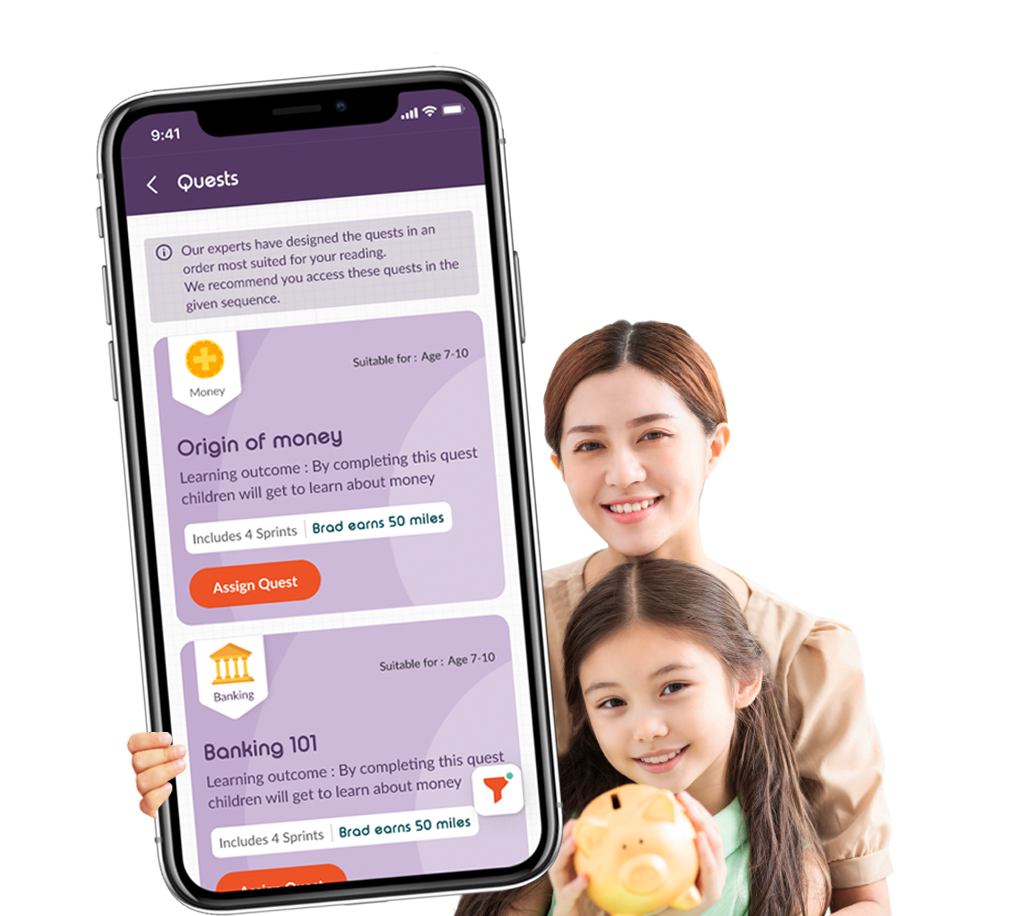A Parent's Guide To Teaching Kids Budgeting
The Ultimate Guide To Teaching Your Kids Budgeting
While budgeting for many might feel like nothing but a tedious and time-consuming financial exercise, it becomes a crucial life skill to teach kids for healthy financial adulthood. According to research, the main source of financial education and habits that kids retain comes primarily from home and parents. So how can you introduce the habit of budgeting to your kids?
In this guide, we compile effective activities and tips, along with a bonus sample staple budgeting plan in the end that can help you kickstart this journey with your child.
Why It Matters + Starting the Conversation About Budgeting
Budgeting is the key to learning effective spending and saving habits. Teaching your kids to plan for their financial goals and devise a plan, it helps keep spending in check. The explanation can be simple: it is a plan to help put money to its best use. A starter exercise for budgeting can simply be putting three jars in the house : one for saving, spending, and giving. In addition to giving them a clear understanding of money allocation, this distinguishes what money can be used for.
The 5-Step Process: Guide To Teaching Budgeting
Regardless of age, through the right approach and making learning fun, you can introduce your kids to budgeting. This prepares them for the ideal financial habits as they grow older.
Step 1: Drawing the Line Between Needs Vs Wants
This is a crucial step to teaching your kid financial responsibility. Children are not always great at restraint, therefore, by teaching them to differentiate between needs and wants, they will be able to put their spending in perspective.
Start with the simple distinction between video games and food. By making them realize that they can’t survive without food and that video games are something they strongly want, you can eventually help them prioritize their expenses. The goal is to teach them about the value and not cost, and reinforce the idea that it is not necessarily a choice between the two, but an effective plan to spend on both.
Step 2: Involving them in Budgeting Tasks
Teamwork makes the dream work. By effectively including them in small activities during budgeting, you can give them a real experience of what budgeting looks like.
Start with a grocery run. Give them a budget on how much you plan to spend on your groceries and the items you need and want to purchase. They can allocate the budget to effectively shopping for groceries. You can further extend this activity by helping them plan their weekly budget: how much they will spend on food out of their allowance, save or spend on toys, etc.
Step 3: Maximising their Earnings
While when young, they might not be able to actively work for a fixed amount of income, however, through the reward system, you can give them small allowances.
As they grow older and more suitable to get a part-time job, you can have discussions about how they plan to spend their money. By helping them plan their income and spending on a consistent basis, they can learn and rectify the mistakes when the stakes aren’t high and eventually notice for themselves the big difference it makes.
Step 4: Setting Goals + The Rule of Budgeting
This might be a good time to introduce them to the rule of budgeting.i
While majorly helping the whole process, this can also help them set goals for themselves, such as getting a new video game and allocating money to achieve it in the future. This rule is the 50/30/20 Budgeting Rule. 50% of your income is for needs, 30% for saving and 20% for wants, thereby striking a balance. Having goals set at the end is also a great motivator to keep sticking to this habit.
Step 5: Creating a Well-Rounded Budget
Now that your kid has a strong foundation of the concept, you can put this into a proper well-planned budget in a few steps.
Analyze Total Income: First, get a round figure of the total average income, including earnings, gifts or small rewards.
Allocating Income: By the rule, they can then allocate the income to save, spend and share accordingly. While this rule is a good guideline to follow, in reality, the allocation might differ. Make sure to ask your kids how much they are spending and saving, and why.
Sharing and giving back: Teaching them that money isn’t just for personal use but also good for philanthropy is also an extremely good approach. This raises them to be empathetic and ethical and ensure they do their part in the community for a better future.
Extra Tips + Sample Staple Budgeting Example
Tip #1: Budgeting Tools
Notebooks and Ready-To-Use Templates: Get them a set of colorful pens and sticky notes, and help them design their dream budget plan to track their expenses. You can also use the digital tool of templates or worksheets to solve together, though it is always recommended to create one from scratch, so your kid understands the reason behind each category.
Budgeting Apps: This can be your kid’s buddy throughout their journey. By helping them use a kid-friendly app, you can add another element of fun to their journey along with seamless tracking. Milestone is a carefully curated app helping you track spending, saving, sharing, and budgeting along with interesting quests for your kids for a complete financial experience.
Tip #2: Compete and Have Fun
Have weekly competitions between family members to have a fun and insightful experience. Who saves the most, in the end, wins with an exciting reward, say a luxury dinner, in the end!
Sample Budgeting Example At a Glance
 Milestone Edutech Pte. Ltd.
Milestone Edutech Pte. Ltd.JustCo, Centrepoint Singapore,
176 Orchard road, #04-04,
Singapore. 238843

COPYRIGHT 2021-2022 I Privacy Policy I Terms and Conditions




